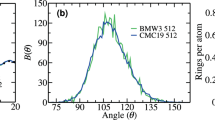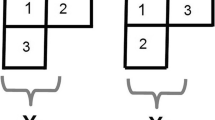Abstract
TWO-DIMENSIONAL Fourier synthesis is a most useful tool in the hands of the crystal analyst. A Patterson1 synthesis, which uses observed intensities directly, is the only way of summarising in one picture all the information contained in a set of intensities, and at the very least it is a useful aid in the guessing of probable structures. Further, once an approximate structure has been obtained, a method of successive Fourier syntheses of the ordinary type introducing more and more F's as the signs become known will enable parameters to be found which are the best possible values obtainable from the data involved.
This is a preview of subscription content, access via your institution
Access options
Subscribe to this journal
Receive 51 print issues and online access
$199.00 per year
only $3.90 per issue
Buy this article
- Purchase on Springer Link
- Instant access to full article PDF
Prices may be subject to local taxes which are calculated during checkout
Similar content being viewed by others
References
Z. Krist., A, 90, 517 (1935).
Author information
Authors and Affiliations
Rights and permissions
About this article
Cite this article
BEEVERS, C., LIPSON, H. A Numerical Method for Two-dimensional Fourier Synthesis. Nature 137, 825–826 (1936). https://doi.org/10.1038/137825a0
Issue Date:
DOI: https://doi.org/10.1038/137825a0
This article is cited by
-
Structure of halogenates of the type a (BO3)2·H2O
Proceedings of the Indian Academy of Sciences - Section A (1952)
-
Numerical Fourier Analysis to Twenty-Nine Harmonics
Nature (1943)
-
Calculation of Structure Factors and Summation of Fourier Series in Crystal Analysis: Non-centrosymmetrical Projections
Nature (1936)
Comments
By submitting a comment you agree to abide by our Terms and Community Guidelines. If you find something abusive or that does not comply with our terms or guidelines please flag it as inappropriate.



